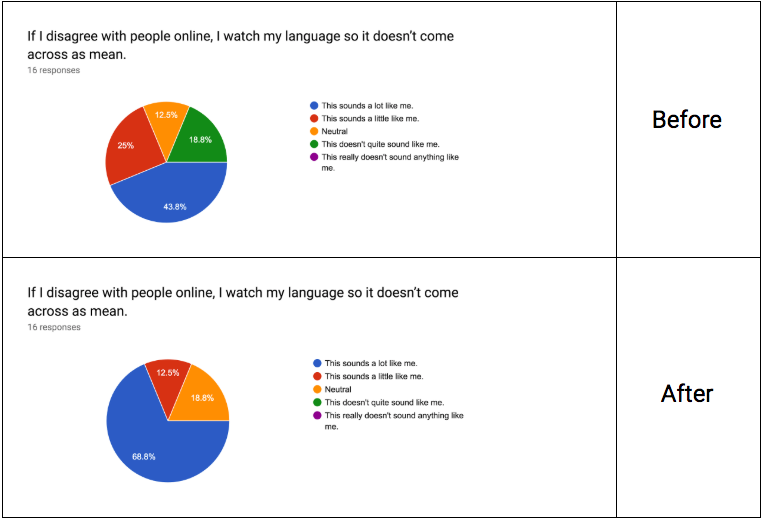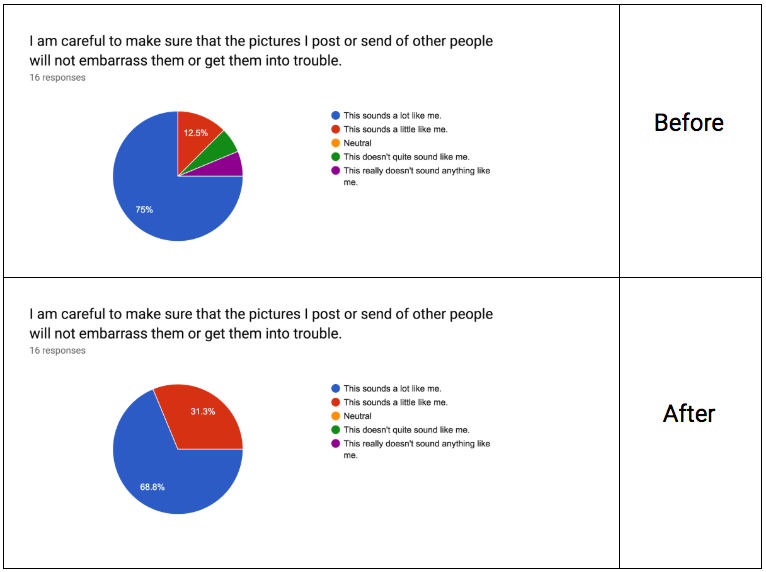Contributed by Katie Cain
This year, I was asked to teach a brand new connections class in sixth grade centered on Digital Citizenship. Sixth grade is an especially important time to offer this course. Although only about 60% of my students have their own social media accounts, nearly all of my eleven- and twelve-year old students have their own cell phone. At this age, as learners begin to gain access to social media and other ways to interact online, it’s crucial to develop their empathy muscles and equip them with strategies to navigate the digital space responsibly.
Course Description
Digital citizenship skills include making wise choices and treating others respectfully in an online space. Oftentimes schools approach digital citizenship education as a litany of Do’s and Don’ts, which research shows is not an effective means to influence adolescents’ thoughts and behaviors. Rather than lecture learners how they should not behave, this 7-week course aims to empower students to make a positive impact on others in the digital realm. Through contributing positively to online communities, connecting with peers globally, examining current events, and practicing perspective-taking, my goal is to develop students’ capacity as engaged (digital) citizen leaders.

Impact on Students’ Self-Perceptions
Hoping to measure the impact of this course, I administer a survey to students at the start of the course and again at the end. In conducting research for my specialist degree, I came across a digital citizenship scale developed by two professors at the University of New Hampshire, Dr. Lisa Jones, and Dr. Kimberly Mitchell. Their scale aims to measure learners’ self-perceptions of respect and civic engagement online, and I used their 11 questions to survey my students. A snapshot of a few questions and students’ responses are below.




